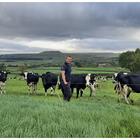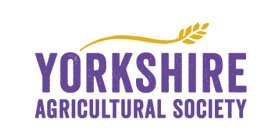Report Synopsis
Counting Carbon; Does a Smaller Footprint Leave Less Impact? Defining Sustainability in the Dairy Sector.
Carbon footprints are presented within the contemporary media, commercial entities and frequently by government agencies as a proximate measure for sustainability.
Footprints are based on the science of Life Cycle Analysis (LCA), a footprint seeks to convey information about a specific environmental criteria, in a simple form, accessible to the public and non-technical stakeholders.
In the dairy sector, due to highly complex biological production systems, multiple outputs, use of co-products and relatively abstract components such as indirect land use change, there is significant opportunity for methodological divergence when calculating carbon footprints of milk.
Layered on top of this are debates around accounting for soil carbon sequestration, the application of carbon off-setting as well as the carbon equivalence of short-lived greenhouse gasses.
Fundamentally carbon footprints represent a metric of efficiency, describing the ‘carbon input’ required to produce a standardised unit of output.
Pertaining to the dairy sector, the key factor above all others that drives the carbon footprint of milk is feed efficiency. Given this, it is unsurprising that the correlation between the carbon footprint and profitability is strong.
High output, confinement dairy systems almost without exception feed higher levels of concentrate to cows making the ration more digestible and leading to higher milk output. In broad terms, this results in a lower carbon footprint per litre of milk when compared to more extensive grazing systems.
When asked to define sustainability within the dairy sector, expert stakeholders, largely converged of a set of overarching themes that should characterise a resilient and sustainable dairy sector.
These themes describe a self-perpetuating industry, that can continue in perpetuity, without eroding the natural or social capital upon which the industry, and wider communities, depend upon to function.
Natural capital has been described and defined as encompassing soil health, clean water and biodiversity.
Livestock systems can play an integral role in restoring and maintaining natural capital, but what is perceived as the highly intensive nature of dairy farming frequently presents barriers to this and presents risk of environmental damage.
Excessive nutrient surpluses generated by high intensity farming, present an elevated risk of eutrophication, water pollution and biodiversity loss.
Driven by the pursuit of efficiency, agriculture has seen a seismic and ever accelerating shift towards larger, higher yielding, more specialised farming systems with greater dependency on non-renewable resources, purchased inputs and capital assets.
Through capital interest, depreciation and asset costs these systems carry increasing levels of fixed costs, driving the necessity to maximise output even at very low marginal profitability and frequently at very low marginal efficiency.
Miles Middleton

Yorkshire Agricultural Society

Similar Reports
- 2023
The world of cacao
Linda Kopczinski - 2023
What's the beef? Opportunities for beef on dairy in New Zealand.
Matt Iremonger - 2022
Toward Sustainable Livestock: Integrating Domestic Feed and Exports
Shinya Okazaki - 2022
New Zealand Dairy Trade And Market Expansion Opportunities.
Parmindar Singh
